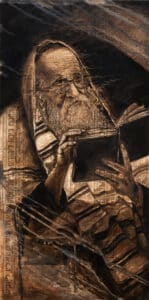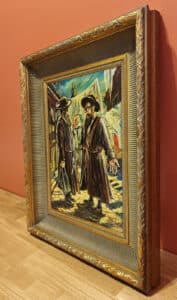Jewish art has a rich and diverse history, spanning centuries and cultures. From ancient illuminated manuscripts to contemporary paintings, Jewish artists have created works that are both beautiful and meaningful. One aspect of Jewish art that is particularly notable is the use of vibrant, symbolic colors. In this article, we’ll explore the world of “kosher colors” and the ways in which they are used to celebrate Jewish culture.
Painting the Jewish Story
Jewish art has always been closely tied to Jewish history and tradition. From depictions of biblical stories to images of Jewish life in various eras and regions, Jewish artists have used their paintings to tell the story of the Jewish people. Often, these paintings are filled with color – bright blues, rich golds, deep reds – that convey both the beauty and the significance of the subjects they depict.
A Colorful Celebration of Culture
Jewish art is not just about telling stories, however – it’s also a celebration of Jewish culture. Paintings that depict Jewish holidays, festivals, and traditions are often filled with colorful imagery that reflects the joy and excitement of these occasions. From the bright greens of the lulav and etrog on Sukkot to the deep blues of the Hanukkah candles, Jewish art captures the vibrancy and diversity of Jewish culture.
The Beauty of Jewish Art
Of course, Jewish art isn’t just about color – it’s also about the beauty and skill of the artists who create it. Jewish painters have been responsible for some of the most stunning and memorable works of art in history, from the intricate illuminated manuscripts of medieval Europe to the bold and vibrant paintings of modern Israeli artists. Whether working in traditional or contemporary styles, Jewish artists never fail to create works that are both visually stunning and deeply meaningful.
Vibrant Hues in Kosher Colors
One aspect of Jewish art that is particularly notable is the use of “kosher colors” – colors that have symbolic meaning within Jewish tradition. For example, blue is often associated with the sky and the heavens, as well as with the color of the fringes on a tallit. Gold is often used to represent the divine, as well as the preciousness of Torah and other sacred objects. These colors, and others like them, are used to great effect in Jewish art – creating works that are not only visually stunning, but infused with deep significance and meaning.
Celebrating Jewish Art
In conclusion, Jewish art is a rich and diverse field, filled with works that are both beautiful and meaningful. From biblical stories to contemporary life, Jewish painters have used color to convey the vibrancy and depth of Jewish culture. Whether working in traditional or contemporary styles, Jewish artists continue to create works that inspire and delight viewers around the world.
So the next time you view a Jewish painting, take a moment to appreciate the vibrant hues and the rich symbolism they represent. And if you’re a lover of art, consider exploring the world of Jewish art – you never know what treasures you might discover!


























